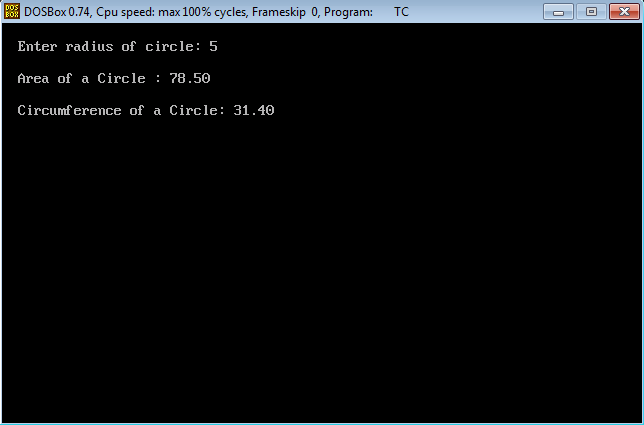eCommerce has experienced continued growth during the last decade. In this article we have collected some eCommerce statistics in 2023 and over the last decade showing how its adoption has increased over the years.
Global eCommerce market growth
The global eCommerce revenue is expected to reach nearly 6 trillion € in 2023 and to surpass 7 trillion € by 2025, according to eMarketer eCommerce statistics and forecasts. The forecast for retail eCommerce sales growth is about 9% in 2023; a growth rate that is expected to remain quite steady during the next triennium.
These predictions show a stabilization following the skyrocketing of eCommerce growth worldwide in 2020, due to lockdowns and restrictions. As a result of the increase in digital activity during the pandemic, retail eCommerce sales grew above 25% in 2020 and above 15% in 2021.
These eCommerce statistics not only demand for businesses to stay up to date to new trends and technologies, but also to explore international markets in order to leverage further opportunities. Making specialized eCommerce cloud solutions and complementary services such as Content Delivery Networks a priority for many growing eCommerce sites.
Top 10 biggest eCommerce markets in 2022 (worldwide)
As of December 2022, according to eMarketer Global Ecommerce Forecast, these are the 10 countries with the highest revenue of the world’s retail eCommerce market:
- China: ~2,750 billion Euros (~3,000 billion USD).
- United States: ~1,060 billion Euros (~1,160 billion USD).
- United Kingdom: ~178 billion Euros (~195 billion USD).
- Japan: ~176 billion Euros (~193 billion USD).
- South Korea: ~134 billion Euros (~147 billion USD).
- India: ~107 billion Euros (~118 billion USD).
- Germany: ~88 billion Euros (~97 billion USD).
- Indonesia: ~88 billion Euros (~97 billion USD).
- Canada: ~75 billion Euros (~82 billion USD).
- France: ~72 billion Euros (~79 billion USD).

Moreover, as for eCommerce sales growth globally, these are the growth rates by region worldwide.
| Region | 2022 |
| Southeast Asia | 18.6% |
| Middle East and Africa | 16.0% |
| Latin America | 12.7% |
| Central and Eastern Europe | 10.3% |
| North America | 10.2% |
| Asia-Pacific | 8.8% |
| Western Europe | 4.8% |
Growth in the number of users buying online in the European Union
According to data from eCommerce statistics for individuals in the European Union of Eurostat, in 2022, almost 70% of Internet users purchased something online during the 12 months previous to the survey. The average of Internet users purchasing online in the EU is 68%. While the average in the Euro area is slightly higher: 69% of Internet users shop online.
Evolution of the percentage of online shoppers 2018-2022
The percentage of Internet users purchasing online has evolved during the last five years. The growth rate varies depending on the country, but all of them have generally experienced a significant increase in the number of online buyers. The following table shows the percentage of online shoppers that purchased something on the Internet during the 12 months previous to the annual survey.
| Country | 2018 | 2019 | 2020 | 2021 | 2022 |
| EU average | 56% | 60% | 65% | 67% | 68% |
| Eurozone | 60% | 63% | 67% | 69% | 69% |
| Austria | 60% | 62% | 66% | 63% | 66% |
| Belgium | 61% | 66% | 73% | 75% | 75% |
| Bulgaria | 21% | 22% | 31% | 33% | 41% |
| Croatia | 35% | 45% | 55% | 57% | 56% |
| Cyprus | 32% | 39% | 47% | 54% | 50% |
| Czechia | 59% | 64% | 72% | 75% | 77% |
| Denmark | 84% | 84% | 89% | 91% | 88% |
| Estonia | 61% | 68% | 68% | 70% | 71% |
| Finland | 70% | 73% | 76% | 79% | 79% |
| France | 67% | 70% | not available | 76% | 76% |
| Germany | 77% | 79% | 83% | 76% | 76% |
| Greece | 36% | 39% | 46% | 54% | 59% |
| Hungary | 41% | 49% | 60% | 66% | 70% |
| Iceland | 75% | 80% | 83% | 85% | not available |
| Ireland | 59% | 67% | 74% | 87% | 85% |
| Italy | 36% | 38% | 44% | 51% | 49% |
| Latvia | 45% | 47% | 56% | 62% | 62% |
| Lithuania | 43% | 48% | 54% | 60% | 60% |
| Luxembourg | 72% | 72% | 79% | 81% | 81% |
| Malta | 55% | 58% | 63% | 65% | 68% |
| Netherlands | 80% | 81% | 87% | 89% | 88% |
| Norway | 79% | 82% | 85% | 92% | 92% |
| Poland | 48% | 54% | 61% | 61% | 65% |
| Portugal | 37% | 39% | 45% | 52% | 54% |
| Romania | 20% | 23% | 38% | 38% | 46% |
| Slovakia | 59% | 60% | 62% | 75% | 77% |
| Slovenia | 51% | 56% | 63% | 71% | 63% |
| Spain | 53% | 58% | 63% | 67% | 68% |
| Sweden | 78% | 82% | 84% | 87% | 86% |
| United Kingdom* | 83% | 87% | 90% | not available | not available |
Source: Eurostat(isoc_ec_ibuy) and (isoc_ec_ib20)
*Until Brexit.
Percentage of online shoppers grouped by age in 2022
When looking into the data grouped by age, these are the percentages of users that shop online in the European Union:
- 80% of the users between 16 and 24 years old.
- 78% of the users between 25 and 54 years old.
- 47% of the users between 55 and 74 years old.
In the Euro area, the percentage of users that purchased over the Internet is slightly higher, specially among online buyers between 55 and 74 years old:
- 81% of the users between 16 and 24 years old.
- 79% of the users between 25 and 54 years old.
- 50% of the users between 55 and 74 years old.
Comparison of the percentage of online buyers 2012-2022
When comparing data from 2022 against that of a decade ago, we notice an important growth in online shopping adoption as a regular shopping option within the EU. Some countries, such as Estonia, Greece or Italy, have tripled and even quadrupled the percentage of online buyers between 2012 and 2022.
| Country | 2012 | 2022 |
| EU average | 45% | 68% |
| Eurozone | 45% | 69% |
| Austria | 48% | 66% |
| Belgium | 45% | 75% |
| Bulgaria | 9% | 41% |
| Croatia | 23% | 56% |
| Cyprus | 21% | 50% |
| Czechia | 33% | 77% |
| Denmark | 73% | 88% |
| Estonia | 23% | 71% |
| Finland | 65% | 79% |
| France | 57% | 76% |
| Germany | 65% | 76% |
| Greece | 20% | 59% |
| Hungary | 25% | 70% |
| Iceland | 54% | not available |
| Ireland | 46% | 85% |
| Italy | 17% | 49% |
| Latvia | 27% | 62% |
| Lithuania | 20% | 60% |
| Luxembourg | 68% | 81% |
| Malta | 44% | 68% |
| Netherlands | 65% | 88% |
| Norway | 76% | 92% |
| Poland | 30% | 65% |
| Portugal | 22% | 54% |
| Romania | 5% | 46% |
| Slovakia | 45% | 77% |
| Slovenia | 34% | 63% |
| Spain | 30% | 68% |
| Sweden | 74% | 86% |
| United Kingdom* | 73% | not available |
Source: Eurostat(isoc_ec_ibuy) and (isoc_ec_ib20)
*Until Brexit.
Comparison of the percentage of online buyers by age group 2012-2022
When comparing data grouped by age between 2012 and 2022, data in the EU and the Euro area is very similar:
| Age group | 2012 (EU) | 2022 (EU) |
| 16-24 years old | 54% | 80% |
| 25-54 years old | 53% | 78% |
| 55-74 years old | 25% | 47% |
The age group whose number of online buyers has increased the most is that of the Internet users between 55 and 74 years old — from 25% to 47% of users purchasing online in the EU and from 24% to 50% in the Eurozone.
| Age group | 2012 (Euro area) | 2022 (Euro area) |
| 16-24 years old | 55% | 81% |
| 25-54 years old | 53% | 79% |
| 55-74 years old | 24% | 50% |
Most online purchased products in the European Union in 2022
Moreover, according to data from Eurostat, these were the most online purchased products in the EU in 2022, during the three months previous to running the survey:
- Clothes, shoes and accessories (38%).
- Films and series streaming or download (17%).
- Food delivery and catering services (17%).
- Furniture, home accessories and gardening products (15%).
- Cosmetics and beauty and wellness products (15%).
- Music streaming or download (14%).
- Printed books, magazines and newspapers (13%).
- Computers, tablets, mobile phones and accessories (12%).
- Medicine and dietary supplements (11%).
- Toys and items for children (11%).
To sum up, according to eCommerce statistics worldwide, the eCommerce market has not stopped growing during the last decade and it is expected to continue growing.
The number of users that purchase products and services online keeps rising, along with the number of Internet users, and businesses need to keep up with innovation in order to meet customers demands and not fall behind. To do so, companies leverage the flexibility, performance and availability offered by eCommerce cloud solutions.
Sources: eMarketer and Eurostat.






![How to Play DVDs on Fedora Linux [Quick Tip]](https://ubercloud.com.au/linuxpunx/wp-content/uploads/sites/3/2021/03/how-to-play-dvds-on-fedora-linux-quick-tip-768x495.jpg)